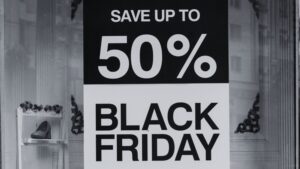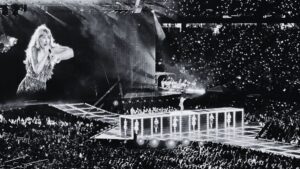Consumer buying behavior is complex, and there is much for retailers to understand about both their existing customers, and their potential new customers. The information that can be gained by studying consumer behavior can be incredibly beneficial in helping businesses to decide on activity to encourage customers to engage with them, to make purchase decisions faster, and much, much more.
At pass_by, we offer the highest in market accuracy with 94% correlation to ground truth, over 15 data inputs, and a full 90 days of predictive feeds. Sign up to our newsletter so you never miss a report.
Jump to:
- Meaning of consumer buying behavior
- Factors of influencing buying behavior
- Biggest influences on consumer behavior
- Types of buyers
- Types of consumer behavior
- Why consumer patterns are important
What Does Consumer Buying Behavior Mean?
Consumer buying behavior is how customers act before (and sometimes after) they make a purchase. This can include things like what different customers are likely to buy, how customers make their choices, what could influence their choices, and issues that might prevent them from making a purchase. To understand consumer buying behavior, analysts consider emotional responses, mental state, socio-economic influences that can guide a person to making a purchase decision.
Why is Consumer Buying Behavior Important?
Being able to document the different types of buyers that might interact with their business, and understanding their buying habits factors that influence the journey to purchase means that businesses can take steps that make it much more likely that customers will buy.
Amongst other factors, retailers should seek to understand:
- The needs of the customer
- The process customers take to making their purchase
- How customers make comparisons, and how that influences their choices
- How to encourage purchase decisions in favor of the business
- What contributes to customer satisfaction
- How customer feedback can inform future marketing activity and product sourcing
A consumer behavior analysis may be carried out when a business is in the early stages of launching, or when scaling up. Understanding consumer buying behavior allows retailers to form strategies for their marketing. This information means that marketing activity, store layout, eCommerce activity, and right through to post-purchase activity can be optimized.
Optimizing marketing activity and in-store arrangements encourage customers to make their purchases more quickly, to buy more than they had initially intended (increasing basket size), to increase the value of the product that they are buying, or simply to return and ultimately, to become a loyal customer. Customer loyalty is incredibly valuable for retailers to build in their customers since the lifetime value of having won the customer increases significantly and means that the return on investment from their marketing activity spend increases.
Find Out How Retail Analytics Can Optimize Your Business
What Factors Influence Consumer Buying Behavior?
Four main categories are known to impact consumer buying behavior. These categories simplify the types of factors that may influence buying behavior, but there are many more subtle factors within each of these categories that may be relevant for retailers to understand when they are carrying out their research and analyses.
Cultural factors include the country that customers live in, their nationality, their religion, morals, traditions, and the specific type of community in which they live.
Social factors may include the buyer’s income, college education, the position in their family – all of which may influence whether they are likely to make a purchase.
Personal factors include relatively static (but not necessarily unchanging) things about the person, such as their age, occupation, and lifestyle.
Psychological factors tend to be influenced by the person’s perception, motivation, and attitude at the time of their purchase.
At pass_by, we offer the highest in market accuracy with 94% correlation to ground truth, over 15 data inputs, and a full 90 days of predictive feeds. Sign up to our newsletter so you never miss a report.
What are the Biggest Influences on Individual Consumer Buying Behavior?
While the broader categories of factors that influence collective buyer behavior, there are so many more influences that can be observed in individual customers. These are some of the over-arching influences on individual customers that can influence their buying behavior, and ultimately their purchase decisions.
Marketing campaigns can be incredibly powerful in influencing whether a customer will make a purchase or not. When customers see marketing activity that they find agreeable and in-line with their personal values, their behavior can be directed by retailers – switch brands, buy something new on a whim, or buy something they only buy every so often. Poor marketing can be just as powerful, and can negatively influence a business – especially where marketing is perceived as annoying, intrusive, or inappropriate.
The economy is a very powerful influence on consumer buying behavior. When the economy is good (and the customer’s own economic circumstances are also suitable) then customers are more likely to spend more on their purchases. This can be as simple as customers choosing branded items where they might normally buy generic versions (particularly for everyday grocery items such as tomato paste) or it may encourage major purchases.
Personal preference will always have an impact on buying behavior. Choices that customers make are often based on likes and dislikes, but purchase decisions are also based on their morals and values, influences their decisions and behavior, such as vegan or vegetarian customers choosing eco-friendly, and ethical options such as Fairtrade, rather than items containing animal products.
Peer/group influence influences almost all human behavior, with societal norms and values guiding many decisions, including buying behavior. Retailers should monitor the mood of the nation, and what is happening within local communities to help understand how peer influence may impact purchase decisions.
Personal finances is one of the strongest influences on consumer behavior. Where customers don’t have space in their budget to buy a product, no amount of other factors will change their ability to buy, and so they simply won’t.
What Types of Buyers are There?
There are four main types of customers when it comes to making purchases, but many customers will sit across several types – and some customers may act in different ways depending on the type of purchase they are making. When spending on an important item (for example, a car seat for their child) a customer may act as an analytical buyer, whereas when they are buying the car, they may act as a combination of driver buyer and expressive buyer.
Analytical buyers are methodical and logical when they make their purchases. They are likely to compare data from different brands and consider a range of solutions for their needs before making their final purchase decision.
Amiable buyers are motivated by ensuring that all stakeholders are happy with the purchase. This desire to keep their family and friends happy means that they may find making their decision difficult.
Driver buyers are concerned with other people’s perceptions of them and their appearance. This type of buyer may want to set trends and be the one their friends turn to when they want to know what is current. They are less concerned with forming a relationship with a brand when they are making a purchase.
Expressive buyers are more concerned with feeling taken care of when they are making a purchase. They want to know the business cares about their feelings and that their custom is valued.
What Types of Consumer Behavior are There?
Habitual buying behavior is seen when customers buy items regularly, and don’t deviate from their chosen items. They might always buy a particular type of toilet paper (for example) and never switch. There may be a better option for their needs, but their habit means they buy the same brand, and even the same size pack each time.
Variety-seeking behavior is driven by the need to have variety. Customers may be totally satisfied with the products they have bought previously, but they buy a different type to enjoy a change. A good example of this might be liquid hand soap for bathrooms. Any type of soap will do the job, but having a different scent, or a more luxurious formula means that the change is enjoyable.
Dissonance-reducing buying behavior can be essential for retailers to understand in order to encourage purchases. Dissonance is where there is a lack of agreement between people or things – and so dissonance-reducing buying behavior seeks to reduce potential regret after the customer has made their purchase. In-store, this may mean the customer needs reassurance from advisors to support their decision and to help them understand the pros and the cons of each option.
Complex buying behavior is frequently seen in consumers that are buying an expensive item, that they don’t buy very often. These aren’t spur-of-the-moment decisions; they are the types of purchases that may require weeks of research, checking reviews, and planning before committing to their final decision. Buying cars, houses, or kitchen appliances are examples that may produce this type of buying behavior.
At pass_by, we offer the highest in market accuracy with 94% correlation to ground truth, over 15 data inputs, and a full 90 days of predictive feeds. Sign up to our newsletter so you never miss a report.
Why are Customer Behavior Patterns Important?
Rather than being habitual purchases, customer behavior patterns show the type of behavior that can be predicted and can be applied to different groups of consumers collectively.
Place of purchase, the types of items that are purchased, the time and frequency of purchase, and the way in which purchases are all patterns that can be documented collectively. Doing so allows businesses to ensure they have optimal amounts of stock available, and prevent deadstock, which can guide retailers with specific marketing activity in the store (or on the website). This may include tactical use of product displays, using demonstrations, special offers, and having sales advisors available to assist customer decisions.





